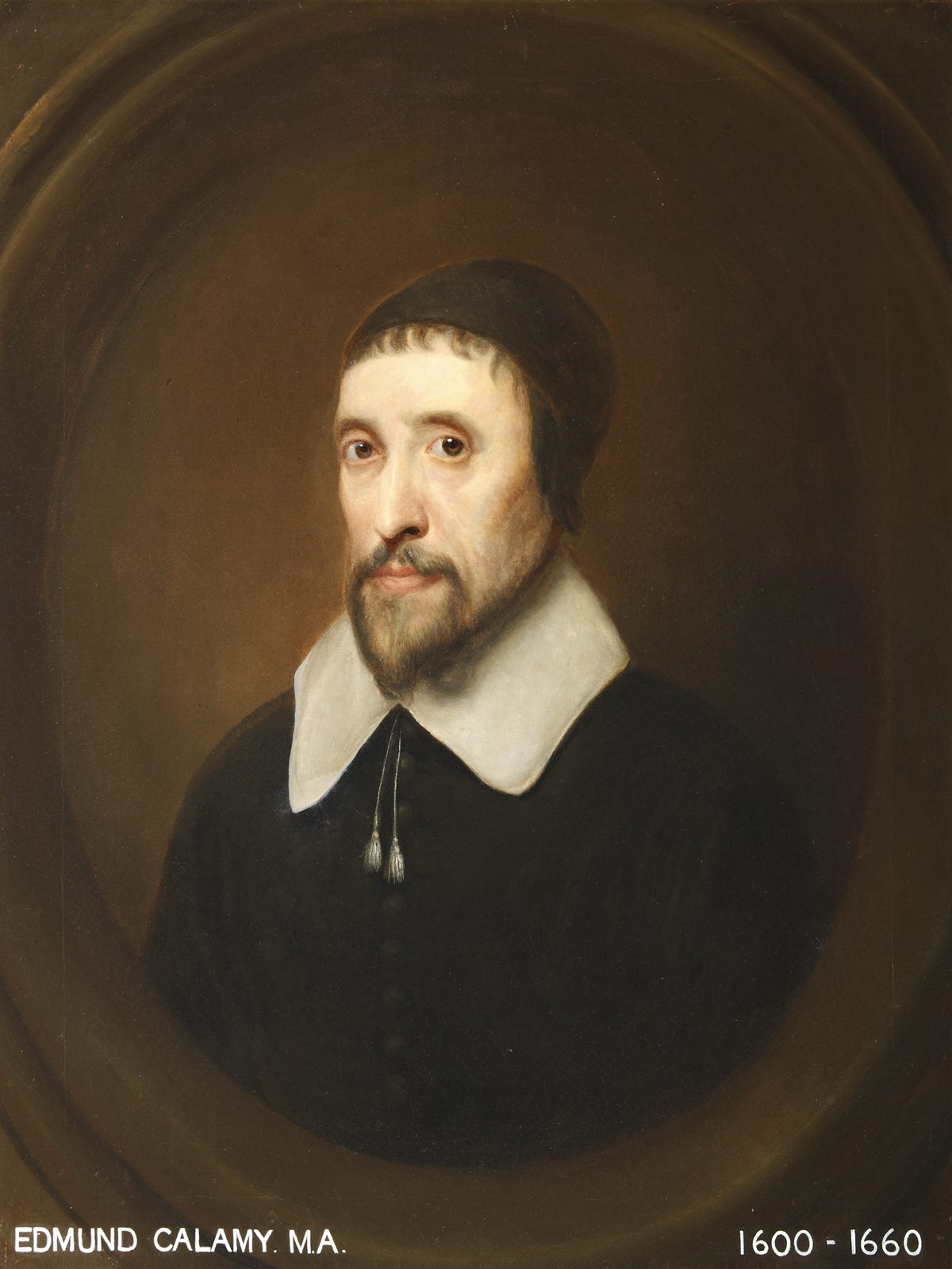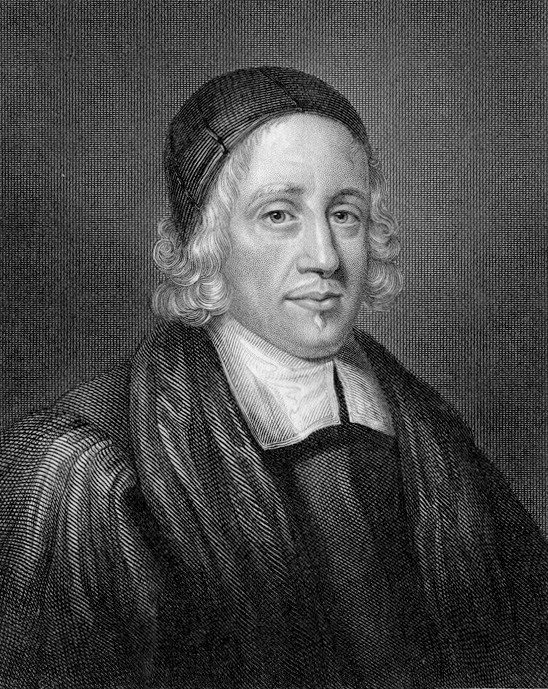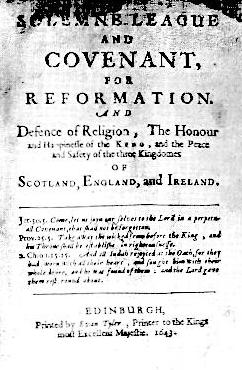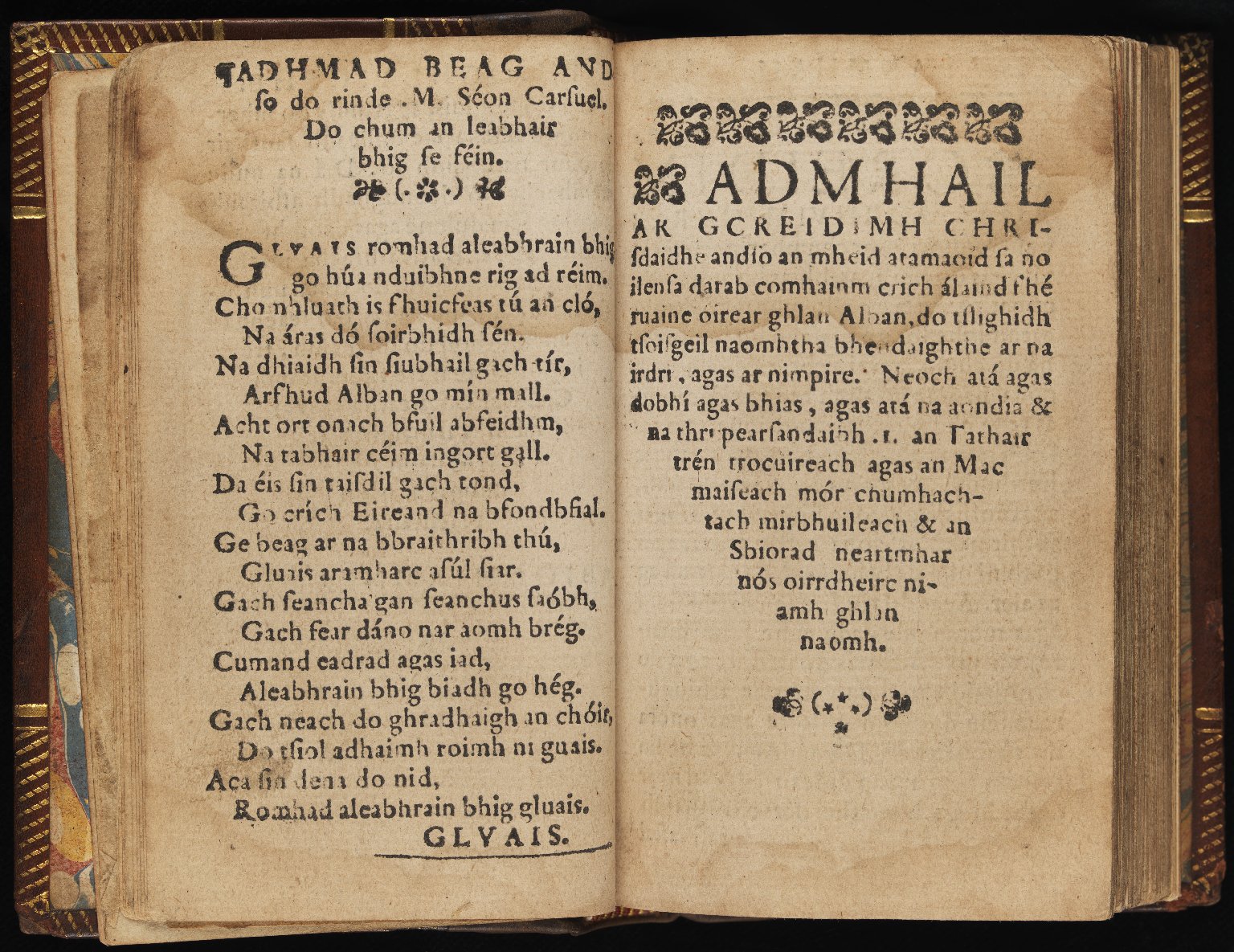|
Westminster Shorter Catechism
The Westminster Shorter Catechism is a catechism written in 1646 and 1647 by the Westminster Assembly, a synod of English and Scottish theologians and laymen intended to bring the Church of England into greater conformity with the Church of Scotland. The assembly also produced the Westminster Confession of Faith and the Westminster Larger Catechism. A version without Scripture citations was completed on 25 November 1647 and presented to the Long Parliament, and Scripture citations were added on 14 April 1649. Background Catechesis is a practice of teaching the Christian faith. New converts to Christianity were taught through lectures during the first four centuries of the Church's existence, but this practice was largely abandoned with the rise of Christendom. Christian humanists and Protestant Reformers sought to revive the practice, including the Reformed. John Calvin's Genevan Catechism was especially influential among the British Reformed. The most popular British cate ... [...More Info...] [...Related Items...] OR: [Wikipedia] [Google] [Baidu] |
James Ussher
James Ussher (or Usher; 4 January 1581 – 21 March 1656) was the Church of Ireland Archbishop of Armagh and Primate of All Ireland between 1625 and 1656. He was a prolific Irish scholar and church leader, who today is most famous for his identification of the genuine letters of the church father, Ignatius of Antioch, and for his chronology that sought to establish the time and date of the creation as "the entrance of the night preceding the 23rd day of October... the year before Christ 4004"; that is, around 6 pm on 22 October 4004 BC, per the proleptic Julian calendar. Education Ussher was born in Dublin to a well-to-do family. His maternal grandfather, James Stanihurst, had been speaker of the Irish parliament. Ussher's father, Arland Ussher, was a clerk in chancery who married Stanihurst's daughter, Margaret (by his first wife Anne Fitzsimon), who was reportedly a Roman Catholic. Ussher's younger and only surviving brother, Ambrose, became a distinguished schola ... [...More Info...] [...Related Items...] OR: [Wikipedia] [Google] [Baidu] |
Edmund Calamy The Elder
Edmund Calamy (February 160029 October 1666) was an English Presbyterian church leader and Anglicanism#Anglican divines, divine. Known as "the elder", he was the first of four generations of nonconformist ministers bearing the same name. Early life The Calamy family claimed to be of Huguenot descent. Edmund Calamy was born in the parish of St Thomas the Apostle, London, and educated at Merchant Taylors' School, Northwood, Merchant Taylors' School and then Pembroke College, Cambridge, where his opposition to Arminianism excluded him from a fellowship. Nicholas Felton (bishop), Nicholas Felton, Bishop of Ely, nevertheless made him his chaplain, and gave him the living of St Mary, Swaffham Prior in East Cambridgeshire, which he held till 1626. He then moved to Bury St Edmunds, where he lectured for ten years; the later Congregationalist polity, Congregationalist Jeremiah Burroughs was another preacher in the town. He retired when his bishop Matthew Wren insisted on the observance ... [...More Info...] [...Related Items...] OR: [Wikipedia] [Google] [Baidu] |
John Lightfoot
John Lightfoot (29 March 1602 – 6 December 1675) was an English churchman, rabbinical scholar, Vice-Chancellor of the University of Cambridge and Master of St Catharine's College, Cambridge. Life He was born in Stoke-on-Trent, the son of Thomas Lightfoot, vicar of Uttoxeter, Staffordshire. He was educated at Morton Green near Congleton, Cheshire, and at Christ's College, Cambridge, where he was regarded as the best orator among the undergraduates. After taking his degree he became assistant master at Repton School in Derbyshire; after taking orders, he was appointed curate of "Norton-under-Hales" (i.e. Norton in Hales) in Shropshire. There he attracted the notice of Sir Rowland Cotton, an amateur Hebraist, who made him his domestic chaplain at Bellaport. Shortly after the removal of Sir Rowland to London, Lightfoot, abandoning an intention to go abroad, accepted a charge at Stone, Staffordshire, where he continued for about two years. From Stone he removed to Horn ... [...More Info...] [...Related Items...] OR: [Wikipedia] [Google] [Baidu] |
Thomas Temple
Sir Thomas Temple, 1st Baronet (January 1613/14 at Stowe, Buckinghamshire, England – 27 March 1674 at Ealing, Middlesex) was an English proprietor and governor of Acadia/Nova Scotia (1657–70). In 1662, he was created a Baronet of Nova Scotia by Charles II. Family He was the second son of Sir John Temple of Stanton Bury and his first wife Dorothy, daughter of Edmund Lee, and a grandson of Sir Thomas Temple, 1st Baronet, of Stowe. Sir Thomas Temple was the great nephew of Lord Saye and Sele. Temple's cousins, Nathaniel Fiennes and John Fiennes were prominent supporter of parliament in the Civil War and members of Oliver Cromwell's Council of State. Both were appointed to Cromwell's House of Lords. Temple in North America In the year 1656, Colonel Temple and Colonel William Crowne became joint proprietors of Nova Scotia, by buying Charles de Saint-Étienne de la Tour's patent as baronet of Nova Scotia. By this purchase, Crowne and Temple agreed to pay la Tour's debt ... [...More Info...] [...Related Items...] OR: [Wikipedia] [Google] [Baidu] |
Charles Herle
Charles Herle (1598–1659) was a prominent English theologian, of moderate Presbyterian views. Herle graduated from Exeter College, Oxford with an M.A. in 1618. He was vicar of Winwick, Lancashire, from 1626. In a controversy with Henry Ferne, a Royalist, Herle insisted, against divine right theory, that a monarch's sovereignty was mediated by the people, rather than coming directly from God. It has been suggested that this work marks the beginning of a transition from theories of mixed government to the doctrine of separation of powers. His 1643 work on ''The independency on scriptures of the independency of churches'' provoked reaction from New England, and controversy with Samuel Rutherford. Parliament appointed Herle as Prolocutor of the Westminster Assembly on 22 July 1646, after the death of William Twisse. The Westminster Confession of Faith of 1646 was drawn up by Herle with others, drafting being assigned at one point to a small group of Herle, Edward Reynolds and Ma ... [...More Info...] [...Related Items...] OR: [Wikipedia] [Google] [Baidu] |
Solemn League And Covenant
The Solemn League and Covenant was an agreement between the Scottish Covenanters and the leaders of the English Parliamentarians in 1643 during the First English Civil War, a theatre of conflict in the Wars of the Three Kingdoms. On 17 August 1643, the Church of Scotland (the Kirk) accepted it and on 25 September 1643 so did the English Parliament and the Westminster Assembly. English Parliament (First Civil War) At the time, the Protestant leaders of the English Parliament were in conflict with King Charles I. Fearing Irish Catholic troops could join the Royalist army, Parliament requested the aid of the Scots. The Presbyterian Covenanters promised their aid, on condition that the Scottish system of church government was adopted in England. This was acceptable to the majority of the English Long Parliament, as many MPs were Presbyterians, while others preferred allying with the Scots rather than losing the Civil War. After some haggling a document called "'' The Solemn ... [...More Info...] [...Related Items...] OR: [Wikipedia] [Google] [Baidu] |
English Civil War
The English Civil War or Great Rebellion was a series of civil wars and political machinations between Cavaliers, Royalists and Roundhead, Parliamentarians in the Kingdom of England from 1642 to 1651. Part of the wider 1639 to 1653 Wars of the Three Kingdoms, the struggle consisted of the First English Civil War and the Second English Civil War. The Anglo-Scottish war (1650–1652), Anglo-Scottish War of 1650 to 1652 is sometimes referred to as the ''Third English Civil War.'' While the conflicts in the three kingdoms of England, Kingdom of Scotland, Scotland and Kingdom of Ireland, Ireland had similarities, each had their own specific issues and objectives. The First English Civil War was fought primarily over the correct balance of power between Parliament of England, Parliament and Charles I of England, Charles I. It ended in June 1646 with Royalist defeat and the king in custody. However, victory exposed Parliamentarian divisions over the nature of the political settlemen ... [...More Info...] [...Related Items...] OR: [Wikipedia] [Google] [Baidu] |
Kirk
Kirk is a Scottish and former Northern English word meaning 'church'. The term ''the Kirk'' is often used informally to refer specifically to the Church of Scotland, the Scottish national church that developed from the 16th-century Reformation. Many place names and personal names are derived from kirk. Basic meaning and etymology As a common noun, ''kirk'' (meaning 'church') is found in Scots, Scottish English, Ulster-Scots and some English dialects, attested as a noun from the 14th century onwards, but as an element in placenames much earlier. Both words, ''kirk'' and ''church'', derive from the Koine Greek κυριακόν (δωμα) (kyriakon (dōma)) meaning ''Lord's (house)'', which was borrowed into the Germanic languages in late antiquity, possibly in the course of the Gothic missions. (Only a connection with the idiosyncrasies of Gothic explains how a Greek neuter noun became a Germanic feminine). Whereas ''church'' displays Old English palatalisation, ''kirk'' ... [...More Info...] [...Related Items...] OR: [Wikipedia] [Google] [Baidu] |
Sabbath In Christianity
Many Christians observe a weekly day set apart for rest and worship called a Sabbath in obedience to God's commandment to remember the Sabbath day, to keep it holy. Early Christians, at first mainly Jewish, observed the seventh-day (Saturday) Sabbath with prayer and rest. At the beginning of the second century the Church Father Ignatius of Antioch approved non-observance of the Sabbath. The now majority practice of Christians is to observe the first day of the week (Sunday), called the Lord's Day, when many significant events occurred during the New Testament - notably the Resurrection - rather than the biblical seventh-day Sabbath as a day of rest and worship. In line with ideas of the 16th and 17th-century Puritans, the Presbyterian and Congregationalist, as well as Methodist and Baptist Churches, enshrined first-day (Sunday) Sabbatarian views in their confessions of faith, observing the Lord's Day as the Christian Sabbath. While practices differ among Christian denomination ... [...More Info...] [...Related Items...] OR: [Wikipedia] [Google] [Baidu] |
First Book Of Discipline
The ''Book of Discipline'' refers to two works regulative of ecclesiastical order in the Church of Scotland, known as ''The First Book of Discipline'' (1560) and ''The Second Book of Discipline'' (1578), drawn up and printed in the Scottish Reformation. The first was drafted by a committee of "six Johns", including leading reformer John Knox. It set out a system of Presbyterian polity on the Geneva model, but the lack of funds meant its programme of clerical organisation and education was largely abandoned. The second book was adopted after the forced abdication of Mary Queen of Scots and was much more clearly Presbyterian in outlook. It placed church supervision fully in the hands of groups of elected church leaders in presbyteries. Background In 1560, following the death of the regent Mary of Guise, who ruled on behalf of her daughter Mary, Queen of Scots who was in France and the defeat of French forces at the Siege of Leith, the reform-minded Lords of the Congregation were i ... [...More Info...] [...Related Items...] OR: [Wikipedia] [Google] [Baidu] |
John Knox
John Knox ( – 24 November 1572) was a Scottish minister, Reformed theologian, and writer who was a leader of the country's Reformation. He was the founder of the Church of Scotland. Born in Giffordgate, a street in Haddington, East Lothian, Knox is believed to have been educated at the University of St Andrews and worked as a notary-priest. Influenced by early church reformers such as George Wishart, he joined the movement to reform the Scottish Church. He was caught up in the and political events that involved the murder of Cardinal David Beaton in 1546 and the intervention of the regent Mary of Guise. He was taken prisoner by French forces the following year and exiled to England on his release in 1549. While in exile, Knox was licensed to work in the Church of England, where he rose in the ranks to serve King Edward VI of England as a royal chaplain. He exerted a reforming influence on the text of the ''Book of Common Prayer''. In England, he met and married hi ... [...More Info...] [...Related Items...] OR: [Wikipedia] [Google] [Baidu] |







